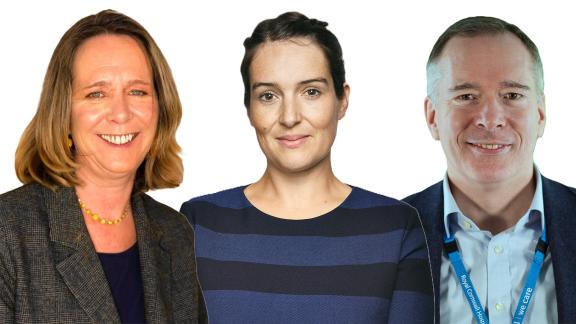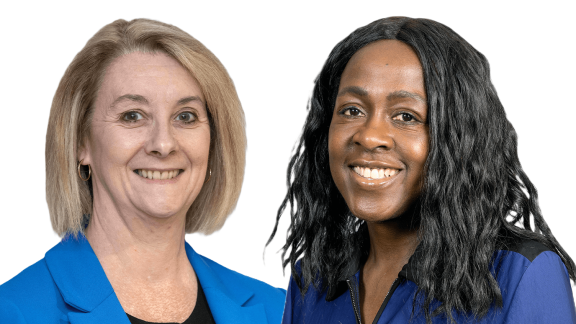Integrated working to address frailty needs: Bradford District and Craven Health and Care Partnership

The delivery of an integrated approach has led to significant health and social improvements among frail and older people within Bradford District and Craven.
Key benefits and outcomes
- Life quality improvement in more than 300 frail and older people.
- Effective data-led identification of patients most at risk.
- Reduced gaps in care and risk through partnership working.
- Improved navigation for patients through health and care services.
- Reduced duplication through collaboration, ensuring patients are seen at the right place at the right time.
What the organisation faced
Three years ago, a close analysis of the health population data established that frailty patterns were high in the area covered by the Bradford District and Craven Health and Care Partnership.
This was taking up valuable clinical time as well as impacting on people’s quality of life and increasing the risk of dependency on services instead of self-care and self-management.
There was a desire to take a preventative approach, to support people with moderate frailty. The aim was to put measures in place to encourage greater independence, to prevent them from becoming severely frail.
Evidence shows that loneliness can lead to accelerated decline in someone’s health. Therefore loneliness and isolation were key indicators for risk and there was a clear need for integrated team working to address both health, as well as social issues.
What the organisation did
There was a determined drive to address this and the Proactive Care Team (PACT) was established, working with partners to provide holistic, person-centred care (and encourage self-care) for people with moderate frailty, to prevent it from becoming severe.
In 2019, The Windhill, Idle and Saltaire Happy and Healthy (WISHH) Primary Care Network (PCN) was established and the PCN quickly recognised the need to work with this patient cohort. As a result, funds were allocated to work with PACT colleagues to support this vulnerable cohort of frail and predominantly older patients at high risk of further degeneration.
A health intelligence tool called RAIDR was used to proactively find patients using the frailty system and bring people into the care of a multi-disciplinary team (MDT). An initial holistic review is the first step in the support process, to establish the living, health and social circumstances of each ‘at risk’ individual.
The review process typically includes the usual medical checks (blood pressure, frailty, dementia screening etc.), which are overseen by the care co-ordinator. This hypothetical case will consider how this works for someone who may be referred to four different services to provide the holistic care needs. From the medical checks we could look at medical interventions such as if the memory score is high, then a first referral is made for a memory/ dementia screening. However we know that there can be broader issues that impact on someone’s health. For example if a person’s house is in a state of disrepair, with no working central heating, a second referral is made to adult social care to see if they can be assessed for additional support.
The partnership approach involves non-statutory agencies. An example of this is that a self-care champion or social prescriber from Hale (a voluntary and community sector organisation) can use their links and contacts. This could lead to a referral to the fire service, who will be booked to fit the property with fire alarms. This person might also be lonely and admit to suicidal thoughts, so a fourth referral is made to the mental health team, and so on. By the end of that initial discussion there could be four or five referral paths and the care coordinator may then refer on to different services.
Each case is then brought back by the care co-ordinator for discussion at the weekly MDT meeting.
The care co-ordinator will have done many of the referrals beforehand, so the team meeting acts as a safety net to ensure nothing is missed. The advantage of this integrated working is that if the referral is made to one person, they might then refer on to others; it’s not just seen as ‘one job’.
Results and benefits
Results tracked by a team dashboard show that the holistic care provided by this project has already transformed the lives of over 300 frail and older people.
Integrated working has been a vital element to this project’s success, turning it from a pilot project into an ongoing system project that is visibly transforming lives. Everyone can see the good work resulting from the integrated working so everyone willingly attends the weekly MDTs, even those who are extremely time pressed, due to COVID-19 and service pressures.
Patients aren’t just left to ‘get on with it’, there’s always the safety net of someone working with them all the time. Follow-up visits can be a vital part of the process, typically occurring a month following the initial referral, to establish if the referrals have made a difference to their levels of independence and mental health.
When physical therapy teams are still working with the patient (six weeks minimum tends to be their typical timeline), they can flag to the MDT team if something is not working and improvements can quickly be implemented.
Overcoming obstacles
The team often receives an initial referral because a person is regularly turning up to the GP, who says there is nothing medical they can do. This is why the social care support element is so vital as well as the connections built through the social prescribers.
However the team might also come across patients (identified through the data) who are not receptive or cooperative in receiving any medical help at all. They might be genuinely fearful of needles and blood tests, or believe they have received poor medical care in the past. This can be tricky to manage, given it is often their loneliness, isolation and inactivity which has exacerbated their frailty in the first place and there may be additional pressing health-related issues that need urgent attention (they might be at higher risk of diabetes/ high blood pressure, etc).
In these circumstances the team has learned that it is vital to quickly gain an individual’s trust and make the initial contact as friendly and verbal as possible, to establish and build a strong and safe connection in their home environment. These individuals are then much more receptive to having these medical discussions.
Another challenge arose when the district nursing team flagged that they were receiving a significant increase in referrals from the PACT service. The WISHH project manager met with them and agreed that although there were more referrals, this was because these patients were being referred to them sooner, before they reached the severe frailty stage. This meant measures could be put in place prevent them from becoming frailer and help keep them independent for longer. Not taking this step would place an increased strain on all services, including the community nursing teams.
This conversation helped the nursing team believe their concerns had been listened to and addressed.
Takeaway tips
- Avoid making frailty the only point of reference when assessing a person’s current and anticipated needs. Look at mental health (including loneliness and social isolation) and frailty with the same perspective and vision to provide effective wraparound support.
- Plan, do, study and act. This is critical in terms of ensuring the process is as effective as can be and to ensure the voices of all involved are heard with the opportunities to make improvements based on feedback.
- There may be an initial increase in referrals into services, be prepared for this and demonstrate how this will realise as a longer-term efficiency as people become less reliant on health and care interventions.
- Avoiding specific care timelines by tailoring support is proven to have a really beneficial effect on patient health outcomes.
Further information
For more information on the work in this case study, please contact:
Ayeesha Qureshi, PCN and CP project manager for WISHH and 5LaneEnds: ayeesha.qureshi@bradford.nhs.uk
Awais Habib, acting head of care coordination at Bradford and Craven District Act as One Health and Care Partnership: awaishabib1@nhs.net



